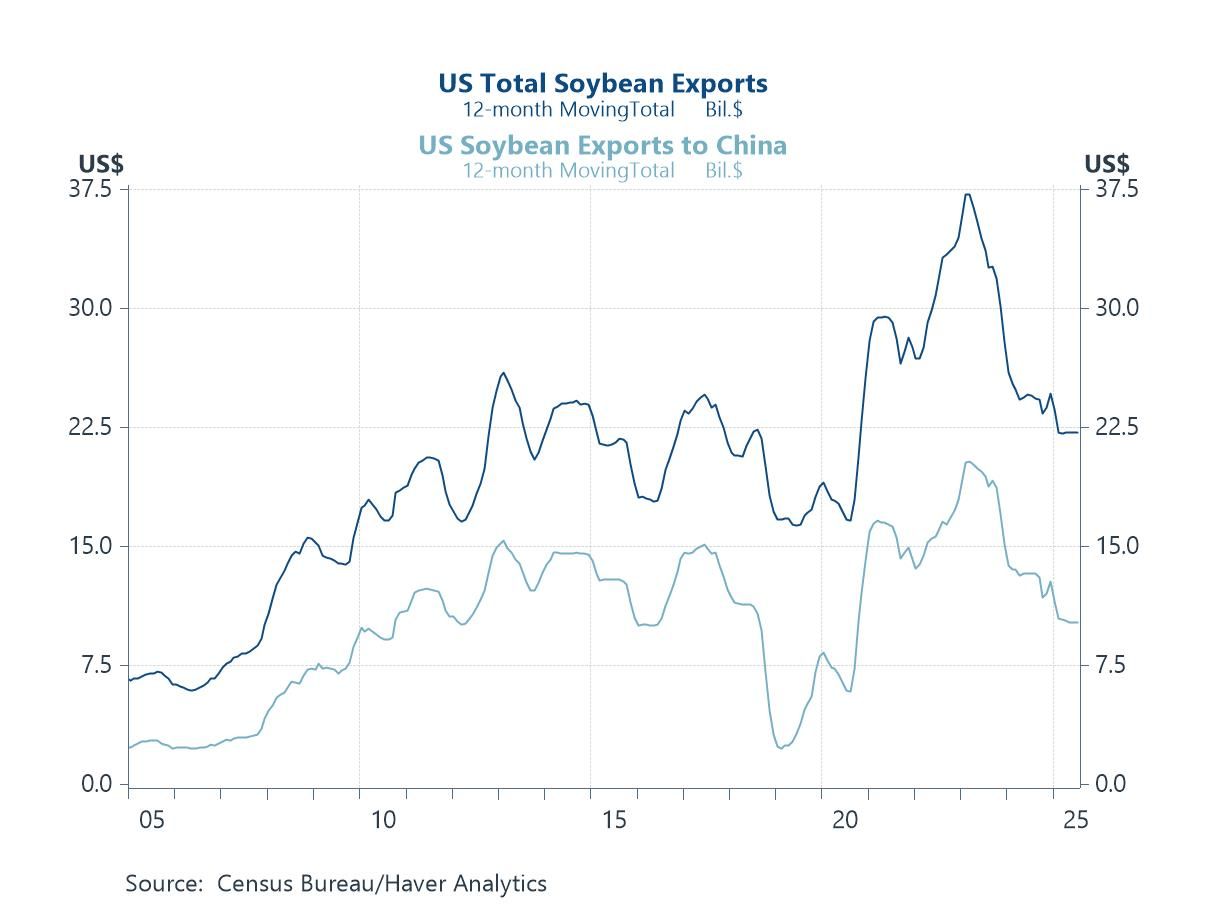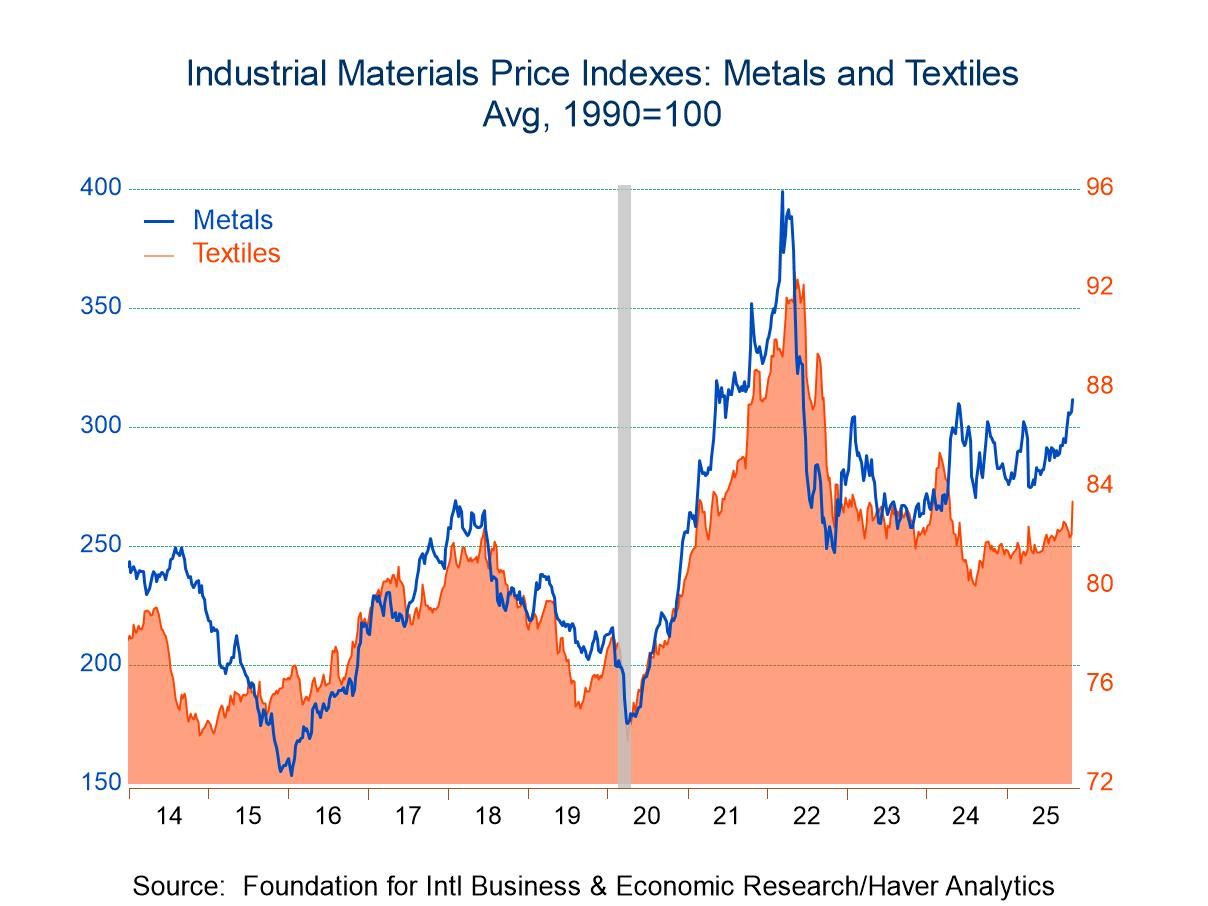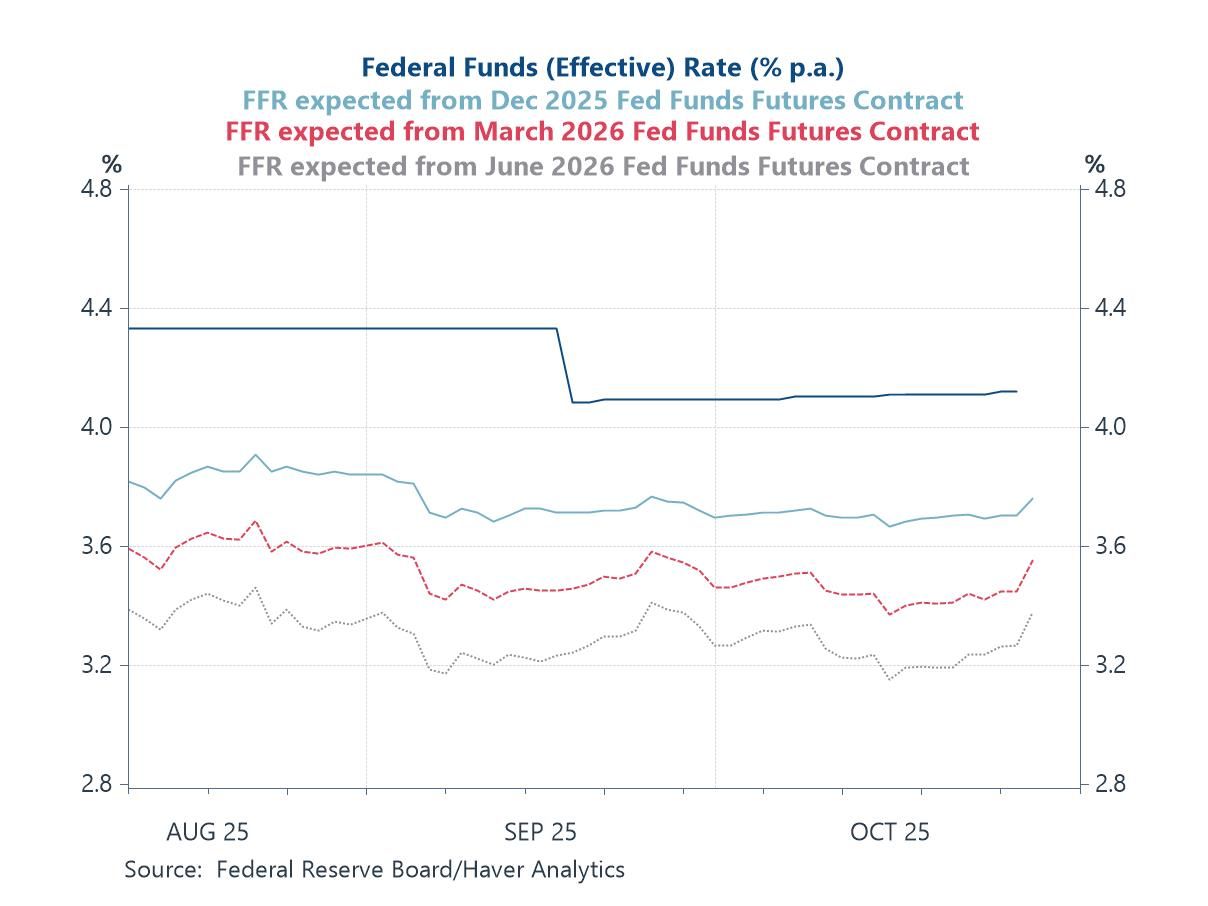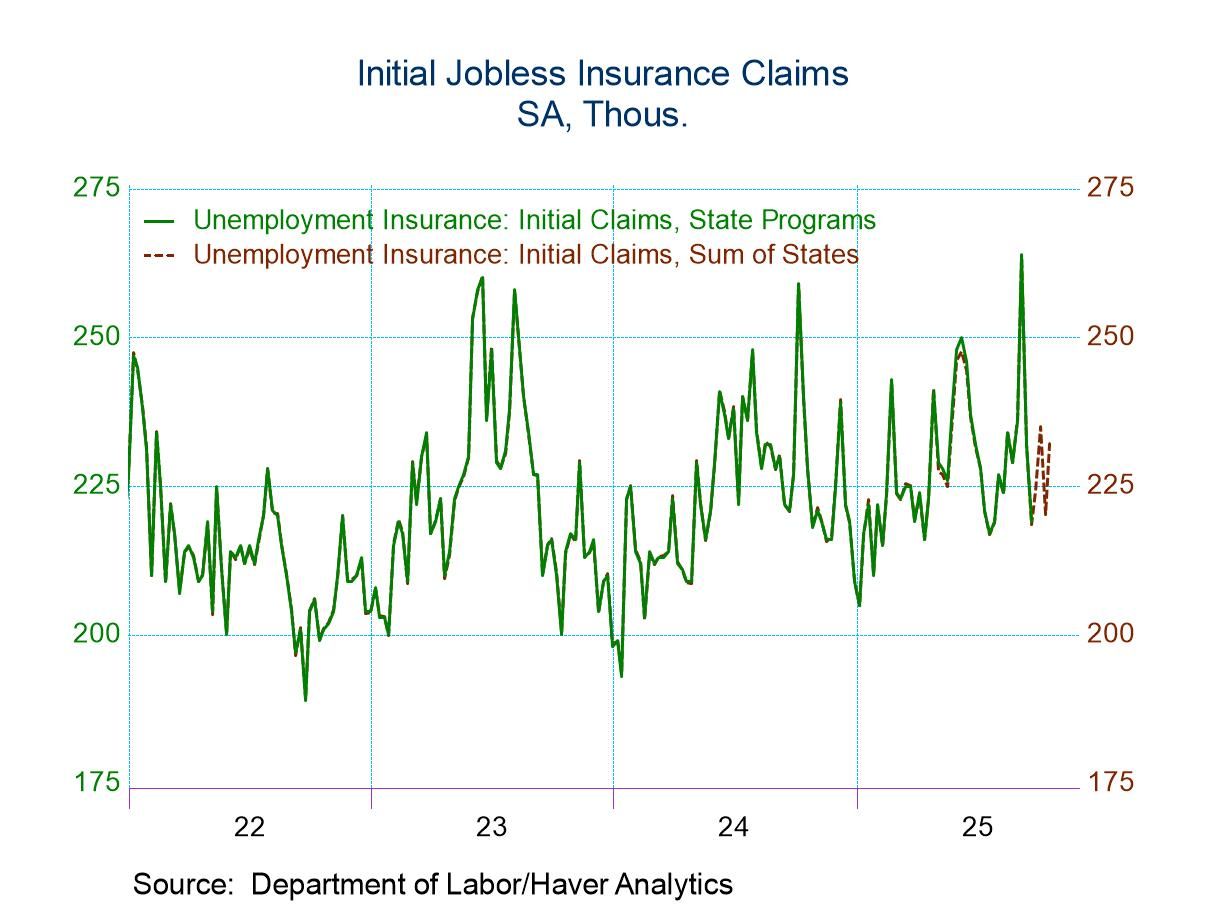 Global| Jan 29 2008
Global| Jan 29 2008U.S. Durable Goods Orders Surged in December, Gain Slowed in 2007
by:Tom Moeller
|in:Economy in Brief
Summary
Orders for durable manufactured goods surged 5.2% last month helped very much by a jump in orders for commercial aircraft. December's rise was the largest m/m gain since July. Nevertheless, a reduced increase in orders for all of 2007 [...]
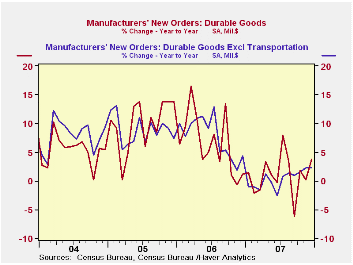
Orders for durable manufactured goods surged 5.2% last month helped very much by a jump in orders for commercial aircraft. December's rise was the largest m/m gain since July. Nevertheless, a reduced increase in orders for all of 2007 highlighted the factory sector's weakness. The 1.0% annual rise in orders was a fraction of the 6.3% gain during the year prior and it was the weakest rise since a decline in 2002. Consensus expectations had been for a smaller gain in December.
Excluding the notably volatile transportation sector, orders rose 2.6% after a slight decline in November. Again, however, the rise did little to make up for weakness earlier in the year. As a result, orders less the transportation sector altogether nudged up just 0.3%, the weakest annual increase since 2003.
In the transportation sector, orders for aircraft & parts surged 26.2% (23.1% y/y) and that followed an 18.4% November jump. The nondefense portion of those orders rose 11.7% (28.4% y/y) and defense aircraft orders more than doubled m/m (7.1% y/y. Working the other way were orders for motor vehicles & parts which fell 2.3% (-12.4% y/y) and these orders were down 4.6% for the year, the second year of decline.
Orders for nondefense capital goods rose 5.4%, about as they did in November. Here again, though, the rise did little to recoup earlier weakness. The m/m gain only lifted the rise for all of last year to a third the rise during 2006. During the last ten years there has been an 80% correlation between the y/y gain in nondefense capital goods orders and the rise in equipment & software spending in the GDP accounts. The correlation with capital goods shipments is, as one would expect, a larger 92%. During December, orders for nondefense capital goods less aircraft posted a 4.4% surge which more than made up declines during the prior two months.
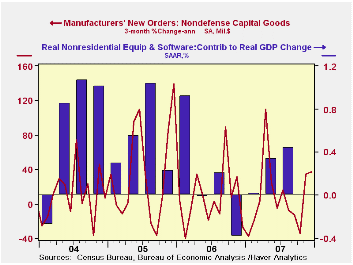
Computers & related products orders rose 4.6% (4.4% y/y) in December and made up about half the weakness during the prior two months. Orders for computers (9.3% y/y) and for communications equipment (9.3% y/y) were strong in the month but for the whole year these orders were down with lower prices.
Orders for machinery surged 7.6% (4.5% y/y). The strong gain at yearend, however, couldn't mask the slowdown in the capital goods sector last year. For the full year these orders rose only 0.7% after gains of 9.6% and 14.4% during the prior two years.
Primary metal orders ended the year with a slight 0.2% slip (+6.9% y/y). For the year orders rose 3.7%, one third the 2006 increase.Orders for electrical equipment, appliances & components recovered all of the prior month's decline with a 4.1% (1.8% y/y) gain.
Overall shipments of durable goods ticked down slightly in December (-0.1% y/y) for the fifth decline in seven months. Less transportation shipments rose 0.4% (2.2% y/y) while these shipments rose just 0.7% for the full year following a 6.6% 2006 increase.
Inventories of durable goods surged 1.1% (3.6% y/y). Indicative of an inventory backup the three month gain rose to 2.3%, its strongest since late last year while less transportation inventories rose 0.5%. The three month increase accelerated to 1.3%, its highest in a year.
| NAICS Classification | December | November | Y/Y | 2007 | 2006 | 2005 |
|---|---|---|---|---|---|---|
| Durable Goods Orders | 5.2% | 0.5% | 1.7% | 1.0% | 6.3% | 9.9% |
| Excluding Transportation | 2.6% | -0.4% | 2.3% | 0.3% | 7.6% | 8.8% |
| Nondefense Capital Goods | 5.4% | 5.3% | 4.4% | 3.4% | 10.6% | 17.1% |
| Excluding Aircraft | 4.4% | -0.2% | 1.3% | -1.6% | 8.5% | 11.1% |
Tom Moeller
AuthorMore in Author Profile »Prior to joining Haver Analytics in 2000, Mr. Moeller worked as the Economist at Chancellor Capital Management from 1985 to 1999. There, he developed comprehensive economic forecasts and interpreted economic data for equity and fixed income portfolio managers. Also at Chancellor, Mr. Moeller worked as an equity analyst and was responsible for researching and rating companies in the economically sensitive automobile and housing industries for investment in Chancellor’s equity portfolio. Prior to joining Chancellor, Mr. Moeller was an Economist at Citibank from 1979 to 1984. He also analyzed pricing behavior in the metals industry for the Council on Wage and Price Stability in Washington, D.C. In 1999, Mr. Moeller received the award for most accurate forecast from the Forecasters' Club of New York. From 1990 to 1992 he was President of the New York Association for Business Economists. Mr. Moeller earned an M.B.A. in Finance from Fordham University, where he graduated in 1987. He holds a Bachelor of Arts in Economics from George Washington University.



